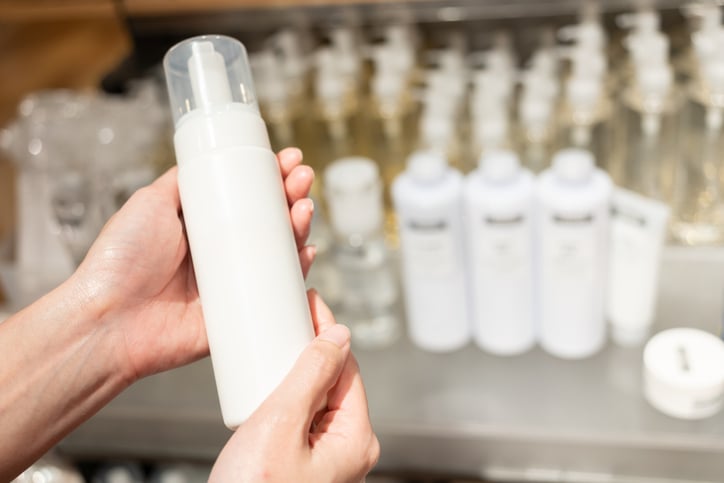The Monthly Metric: Work-in-Process Inventory

A hair-care product company’s shampoo is in the manufacturing process, with the liquid inside the bottles and the caps on top. However, the labels have not been affixed because they have yet to arrive at the facility.
With no branding identification, the shampoo is not on the way to prospective customers’ scalps but stuck in the facility — no longer a raw material but a label away from being a finished good. This state of assembly inertia is called work-in-process (WIP) inventory, which counts as an asset on a business’s balance sheet but offers little value beyond that since it cannot be sold.
Institute for Supply Management®’s (ISM®) Glossary of Key Supply Management Terms defines work in process as “semi-finished goods, located at some point in the production process” that require additional assembly. The amount of WIP inventory can provide insight into the health of a company’s supply chain or its finances.
Since WIP must be stored and can’t be distributed, an excessive amount can impact other inventory metrics like carrying cost, turnover ratio and time to ship. When faced with a WIP scenario, a company has two options, says Tracey Smith, MBA, MAS, CPSM, president of Numerical Insights LLC, a boutique analytics firm in Williamsville, New York.
“When raw materials are missing and a product cannot be made to completion,” she says, “you can either take the product through as many production steps as you can without the missing raw material, or you can elect to not start production at all.” Either choice slows getting a product into cost of inventory (as a finished good) and, ultimately, cost of goods sold.
And for companies that delay production instead of opting for partial assembly, Smith says, the cost of WIP is often excluded from calculation of inventory turns. As a result, when WIP exists, inventory turns can appear higher than they actually are.
Meaning of the Metric
While there are multiple accounting formulas to calculate WIP value, Smith’s definition is simple: All production costs, including labor, incurred for partially making a finished good. The best benchmark for a company is when that amount becomes intolerable to executives, finance or the supply management function.
Many companies willingly took added WIP expense as the coronavirus pandemic continued to stress supply chains in 2021. Inventories elevated as companies were forced into WIP due to parts shortages and long lead times. But in other cases — particularly in such industries as transportation equipment, computer electronics and machinery — manufacturers stockpiled raw materials to “sleep better at night,” as Timothy R. Fiore, CPSM, C.P.M., Chair of the ISM Manufacturing Business Survey Committee, said then.
“They’re asking for more raw material inventory even though they don’t intend on converting it in the near term. … In this kind of environment, you try to pull in as much as you can and not get too worried about working capital — you need to have output,” Fiore said.
Smith says her client companies, which range in revenue from US$1 million to $30 million, weren’t impacted much by COVID-19 because they generally eschew WIP. “The popular choice was to continue prioritizing products that could make it through the entire production process,” she says. “For these companies, the entire production process is less than one day, so there was no advantage to storing partially made product.”
A small amount of WIP is likely not going to be a headache for a company, Smith says. But if it gets abundant, an analysis could reveal that the problem is not a materials shortage or supply disruption. The issue could be a company’s financial situation — for example, a lack of cash flow that results in a missed payment to a supplier, leading to a withheld shipment.
“I’ve seen all of the above,” Smith says.
When WIP Becomes Excessive
The first step in a WIP analysis relates to missing raw materials, Smith says: Is the company waiting on one part or several? Is the issue with one supplier, and where is the disruption? Or is the problem related to company finances?
The prescription for WIP ailments depends on the product and production process, Smith says. “In processes where it’s normal to partially make something and send it to another part of the factory to be completed, a company probably has ample storage, and WIP isn’t a large burden,” she says.
If it’s a supply chain failure, Smith says, a company should consider finding alternate suppliers or temporarily using a substitute part.
“Careful management of raw materials is key to avoiding WIP,” she says. “This is where strategic supply chain decisions must be made. Should you have a single- or multi-supplier strategy for each part? Should you source domestically or internationally? Should you carry safety stock or order on demand? Are you limited in your storage capacity?”
WIP inventory might not be a pressing issue at many companies, but tracking its cost can provide a greater understanding of supply chain and financial performance — helping raise efficiencies and mitigate disruption.
To suggest a metric to be covered, email me at dzeiger@ismworld.org.


